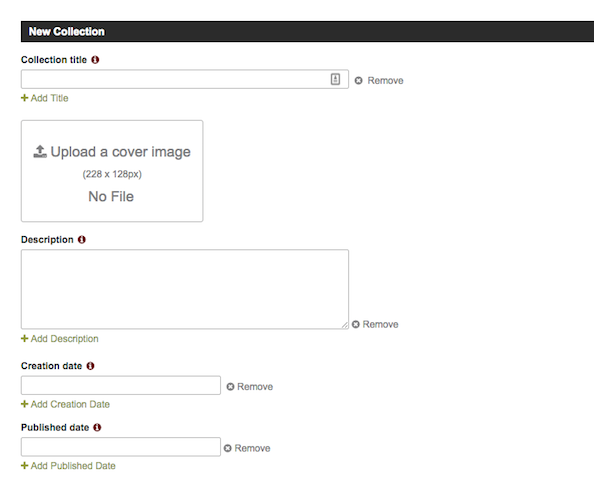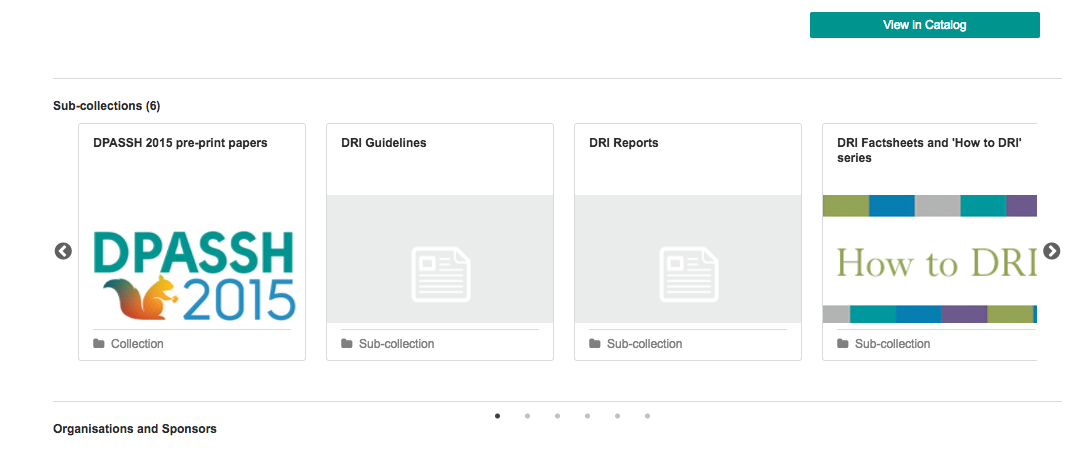Creating Collections¶
The ability to create a collection will depend on your level of permissions within the Repository. If you have the required permissions then in your workspace (Fig. 20 (1)) in the Manage section you will be able to see the ‘New Collection’ (Fig. 20 (2)) option.

Fig. 20 New collection menu option¶
If this is not available then it will be necessary for a collection to be created for you and that you are granted the correct permissions within this collection to create objects. You should contact your Organisation Manager to carry out these tasks on your behalf.

Fig. 21 New collection form¶
Clicking the ‘New Collection’ menu item (if available) will bring you to the web form for
collection creation (Fig. 21). This form allows you to enter the metadata to describe
the new collection. The form requires that a minimum set of metadata fields are entered before the collection
can be created. Licences and access controls are set on objects in DRI rather than collections, but via the form You can also choose a licence (Fig. 22 (1))  to apply to all the
objects within the collection and set the default access controls (Fig. 22 (2)). Both options can be overridden at object level. Before you
can submit the form you must check the box (Fig. 22 (3)) to indicate
that you agree to the terms of the deposit agreement.
to apply to all the
objects within the collection and set the default access controls (Fig. 22 (2)). Both options can be overridden at object level. Before you
can submit the form you must check the box (Fig. 22 (3)) to indicate
that you agree to the terms of the deposit agreement.

Fig. 22 Submitting the collection form¶
Sub-Collections¶
If desired collections can be further organised by being divided into sub-collections. The option to create a sub-collection can be found on the main collection page under the editor tools (Fig. 23 (1)).

Fig. 23 Sub-collection menu item¶
This menu item will bring you to a form, similar to that used to create collections, where you can enter the sub-collection’s descriptive metadata. By default a sub-collection will inherit it’s access permissions from the parent collection, so the form does not include the access control section. It is possible to edit these after the sub-collection has been created.
Once created the sub-collection will be displayed on the parent collection page, as shown in Fig. 24.

Fig. 24 Sub-collection display¶